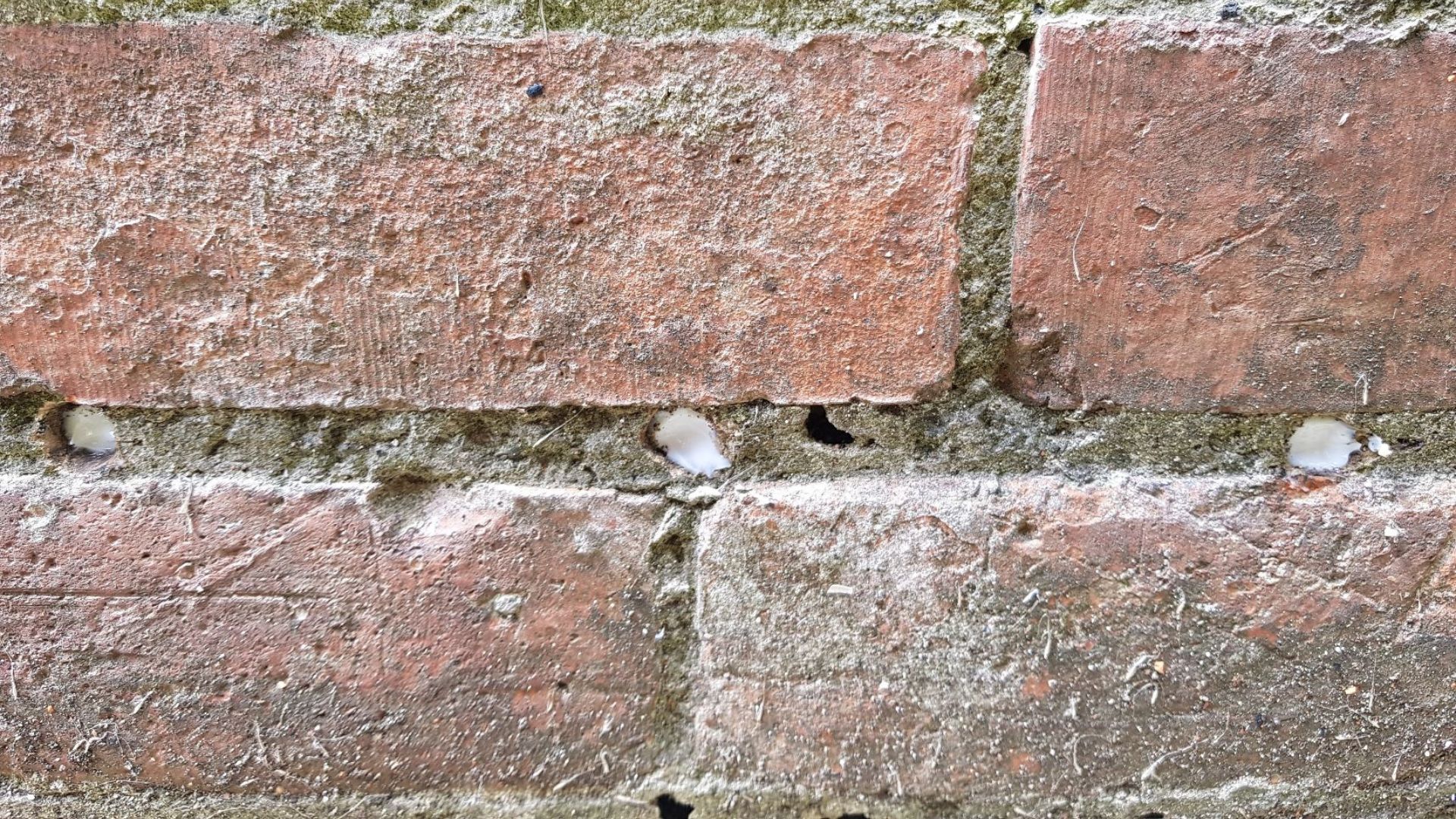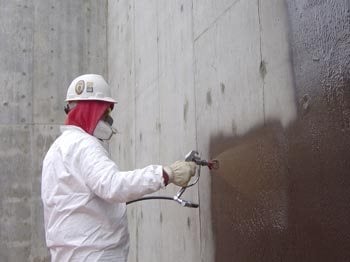Discovering the Numerous Strategies and Solutions for Effective Damp Proofing
Dampness in buildings poses significant challenges to both structural integrity and interior air quality. Different methods and services have arised to fight this prevalent concern. From traditional damp-proof membrane layers to ingenious chemical therapies, each method supplies unique advantages. Understanding these alternatives is important for effective wetness control. Selecting the appropriate solution depends on particular building conditions and needs, motivating additional expedition into the most efficient damp proofing strategies available.
Understanding the Sources Of Wetness
Although wetness can occur from various resources, understanding these reasons is essential for reliable removal. Typically, dampness stems from 3 key resources: increasing moist, penetrating moist, and condensation. Climbing wet takes place when groundwater travels up via porous products, such as block or rock, usually due to an absence of an effective obstacle (mould removal newcastle). Passing through wet is typically caused by external elements, including roofing system leakages, damaged gutters, or harmed walls, permitting water to infiltrate a property. Condensation, on the other hand, arises from excess moisture in the air, commonly aggravated by poor ventilation and temperature level distinctions, causing water beads basing on surface areas. Identifying these underlying issues is necessary, as each kind of wetness requires a customized method for remediation. Appropriate assessment helps in figuring out the most efficient options, eventually guarding the architectural stability of a building and enhancing indoor air top quality
Conventional Damp-Proof Membranes

Chemical Damp-Proofing Solutions
Chemical damp-proofing services supply an innovative technique to stopping wetness invasion in buildings. These techniques normally include the application of liquid chemicals that pass through stonework and create a barrier against climbing damp. Commonly used chemicals consist of silanes, siloxanes, and various other water-repellent representatives that respond with surface area materials to produce a hydrophobic layer.The application procedure usually calls for exploration openings into the walls, infusing the chemical remedy, and permitting it to cure. This technique is especially useful for older frameworks where conventional damp-proof membrane layers may be not practical. Chemical damp-proofing can be much less disruptive and more affordable than considerable remodelling projects.While reliable, these remedies depend on appropriate application and environmental conditions for peak performance. damp proofing newcastle. Normal upkeep and surveillance are necessary to guarantee the longevity of the damp-proofing treatment. In general, chemical damp-proofing represents a versatile option for protecting structures versus moisture-related damages
Tooth Cavity Wall Surface Construction Strategies
Tooth cavity wall building methods use numerous advantages, particularly in wetness control and power effectiveness. By including an air void in between 2 layers of masonry, these wall surfaces successfully mitigate water access while improving insulation. This mix not only secures frameworks from dampness yet likewise adds to reduced power consumption.
Benefits of Cavity Wall Surfaces
When taking into consideration effective moist proofing methods, the advantages of cavity walls stand out prominently. Dental caries walls include two separate layers, developing an air space that successfully minimizes wetness infiltration. This design reduces the threat of dampness, as the external wall surface serves as an obstacle against rain and water access. In addition, cavity wall surfaces improve thermal insulation, which adds to power effectiveness by minimizing heat loss. They additionally provide audio insulation, helping to produce a quieter indoor setting. The air gap permits for ventilation, which helps in dampness control and lowers the probability of mold development. These benefits not only boost the general convenience of a structure yet additionally add to its longevity and structural integrity.
Dampness Control Methods
Reliable moisture control strategies are crucial in dental caries wall building to assure lasting defense against wetness. One main method entails the unification of weep holes, which assist in water drainage from the tooth cavity, protecting against build-up. Additionally, the use of breathable membrane layers can help manage wetness levels while enabling trapped vapor to escape. Correct positioning of insulation is additionally critical, as it should not block drainage courses. Furthermore, ensuring that the outer leaves of the tooth cavity wall surface are constructed with waterproof materials enhances total resilience. Routine maintenance checks are important to recognize any obstructions or damages early, protecting the framework's integrity. Eventually, a mix of these strategies develops a durable protection versus dampness intrusion in cavity walls.
Insulation and Power Efficiency
Insulation plays an important role in boosting power effectiveness within tooth cavity wall surface building. By incorporating protecting materials, these walls produce a thermal obstacle that decreases warmth loss and decreases power consumption. Effective insulation not just assists preserve a secure indoor temperature level but likewise minimizes the risk of wetness, as it protects against condensation within the wall surface dental caries. Different methods, such as using rigid foam boards or mineral woollen, can be utilized to achieve suitable insulation performance. Additionally, proper installment is necessary to guarantee that gaps and gaps are minimized, which can or else endanger power efficiency. Inevitably, a well-insulated tooth cavity wall adds considerably to general sustainability and lowers cooling and heating prices for house owners.
External Damp Proofing Approaches
Outside wet proofing techniques are crucial for safeguarding frameworks from moisture seepage. Two efficient techniques include the application of water-proof membranes and the installation of French drains. These services aid reduce water build-up and maintain the integrity of structures.
Waterproof Membrane Application
While numerous approaches exist for avoiding wetness ingress, the application of water-proof membrane layers stays a very effective external moist proofing strategy. These membrane layers are usually made from products such as polyethylene, rubber, or changed bitumen, supplying a durable barrier against water penetration. The setup procedure entails using the membrane to the outside surface areas of wall surfaces or structures, making sure full coverage to avoid leaks. Correct bond and sealing at joints are critical to taking full advantage of performance. Water-proof membranes can be used in different kinds, including liquid finishes and sheet membranes, enabling versatility based upon the certain demands of the framework. This method not only shields buildings from dampness yet likewise enhances their longevity and structural honesty.
French Drain Setup
One effective method for managing groundwater and stopping wetness accumulation around a structure's structure is the setup of a French drain. This drainage system includes a trench filled up with gravel and a perforated pipeline that reroutes surface water far from the foundation. Proper installment needs careful preparation, making sure that the drain inclines away from the framework to assist in optimal water flow. In addition, the place of the drain is vital; it should be placed in locations susceptible to pooling or excess wetness. Regular upkeep, including clearing up debris from the gravel and making certain the pipeline remains unobstructed, is crucial for long-term effectiveness. Eventually, a well-installed French drain can significantly minimize the danger of water-related concerns in foundations and cellars.
Interior Waterproofing Methods
Inside waterproofing techniques are essential for safeguarding a building's interior from dampness infiltration and potential water damage. These approaches generally involve the application of customized products and techniques made to create a dampness barrier within the structure. One usual approach is the use of water-proof coatings or sealants on walls and floors, which stop moisture from passing through surfaces.Additionally, setting up interior water drainage systems, such as sump pumps, can properly manage water build-up in basements and crawl rooms. An additional approach includes the usage of vapor barriers, which are installed to prevent moisture movement from the ground right into living spaces.Moreover, attending to any cracks or gaps in walls or structures with proper sealants guarantees a detailed defense versus water invasion. By implementing these interior waterproofing approaches, homeowner can greatly decrease the danger of mold and mildew growth, structural damages, and various other moisture-related issues. Proper mould removal newcastle execution of these methods is essential for long-term defense and structure integrity.
Regular Maintenance and Evaluation Practices
Regular upkeep and inspection practices are essential for assuring the lasting performance of wet proofing remedies in any type of building. Regular checks allow building proprietors to determine early indicators of wetness breach, such as peeling paint, mold and mildew development, and musty smells. These indicators can signify underlying problems that call for immediate attention.Inspections need to be conducted at the very least yearly, concentrating on susceptible areas like basements, crawl areas, and exterior walls. Throughout these assessments, homeowner ought to examine sealants, drainage systems, and air flow to validate they function correctly.Additionally, maintaining gutters and downspouts is important, as blocked systems can result in water accumulation near the structure. Implementing a routine upkeep schedule, along with prompt repair services, can substantially prolong the life-span of wet proofing procedures and safeguard the architectural integrity of the building. Proactive steps inevitably add to the overall health and security of the living environment.
Regularly Asked Concerns
The Length Of Time Does Damp Proofing Normally Last?
The duration of moist proofing efficiency differs, typically lasting between 20 to 50 years. Aspects such as application high quality, environmental problems, and maintenance methods significantly influence the longevity of the wet proofing therapy.

Can I Damp Proof My Home Myself?
The specific contemplated the usefulness of do it yourself damp proofing. With appropriate study and the right products, it is feasible. They additionally acknowledged the significance of professional guidance to assure durable performance and stop future problems.
What Are the Signs of Ineffective Damp Proofing?
Signs of inadequate damp proofing consist of relentless mildewy odors, visible mold and mildew development, peeling paint, wet spots on walls, and wood degeneration - mould treatment newcastle. Home owners must attend to these concerns quickly to stop additional damage and health problems
Does Damp Proofing Affect Indoor Air Top Quality?

How Much Does Specialist Damp Proofing Cost?
Expert wet proofing expenses differ significantly, generally varying from $1,000 to $5,000 depending upon the home's dimension, the extent of the moist issue, and selected approaches. Each circumstance needs a customized assessment for precise prices. Generally, moisture stems from 3 main resources: climbing wet, penetrating damp, and condensation. When thinking about efficient wet proofing approaches, the benefits of cavity walls stand out prominently. Outside moist proofing techniques are necessary for safeguarding frameworks from moisture infiltration. While numerous methods exist for avoiding moisture ingress, the application of water-proof membrane layers remains a highly efficient external moist proofing technique. Indicators of inefficient moist proofing include persistent musty odors, visible mold development, peeling off paint, wet patches on wall surfaces, and timber degeneration.
Comments on “Quick tips to reduce moisture buildup with mould treatment newcastle”